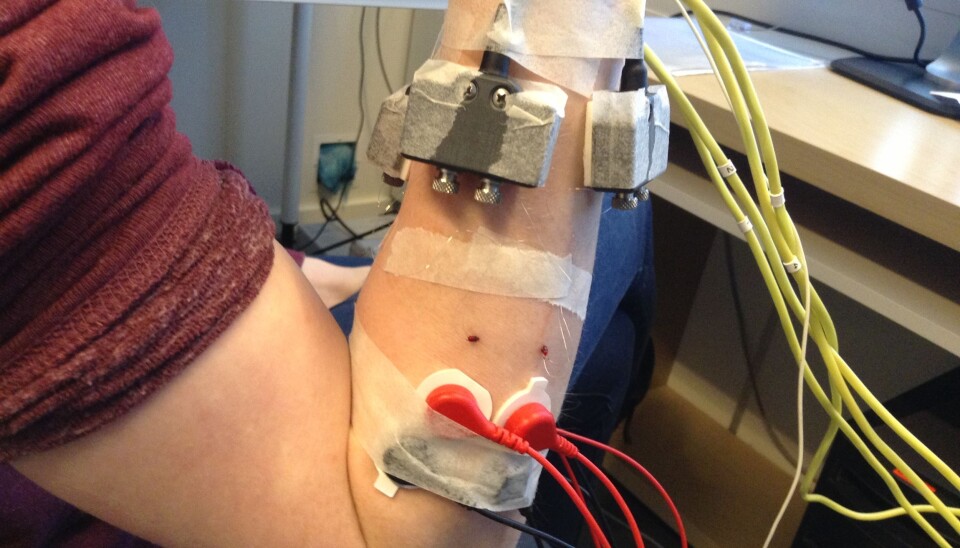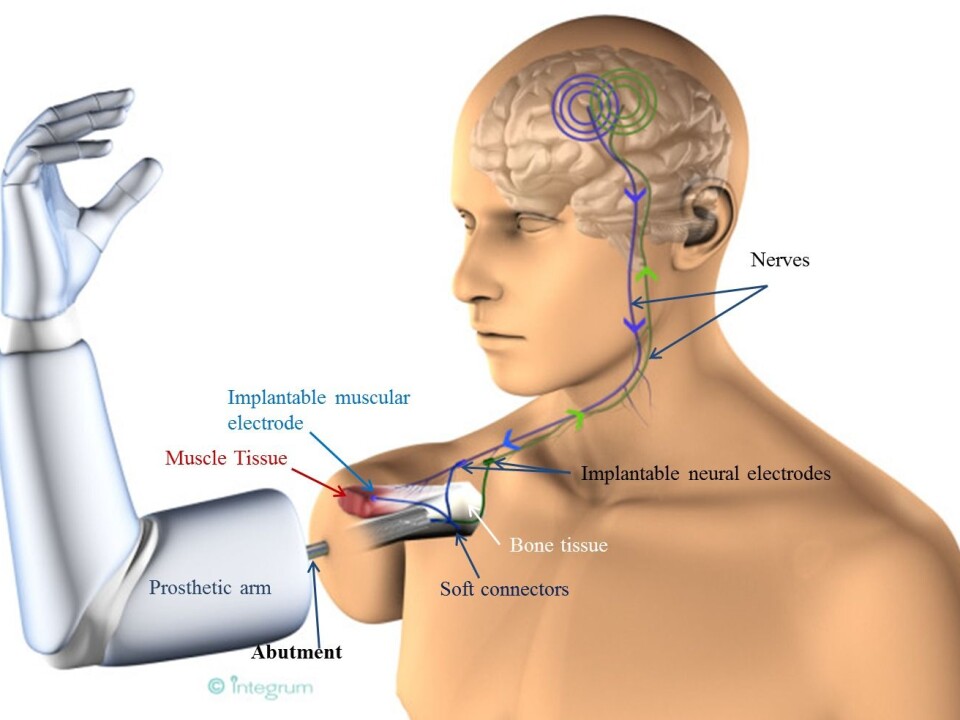
Implanted muscular electrodes improve prosthetic flexibility
By implanting electrodes into the muscles, scientists hope they can make it easier for amputees to control their prosthetic limbs.
People who lack an arm or a leg are limited in their movement throughout their lives. Prosthetic limbs can be helpful, but in terms of movement, there is ample room for improvement.
In a new study, scientists have experimented with electrodes linked up directly to the muscles in an effort to improve the flexibility of prosthetic limbs.
“The way it’s done today is to measure the muscle signals on the skin surface with two electrodes. However, these signals can be difficult to detect through the skin because they are weak and unstable. This obstacle can be overcome by linking the electrodes directly to the muscles under the skin,” says lead-author Ernest Kamavuako, an associate professor at the Department of Health Science and Technology at Aalborg University, Denmark.
New technology can solve signalling problems
Today’s movable prosthetic arms have two electrodes attached to the prosthesis. When the amputee flexes a certain muscle in the stump of the amputated arm, the electrodes in the prosthetic arm detect the signal, which they then convert into a movement in the artificial hand.

However, signalling problems often prevent the prostheses from functioning optimally.
By implanting the electrodes into the muscle itself, rather than placing them on the prosthetic limb, the researchers hope they can make the prosthetic movements easier to control.
A hand prosthesis with a sense of touch
Another research team at Aalborg University recently managed to create the prototype of a hand prosthetis with a sense of touch. Here, a Danish man, who lost his arm nine years ago in an accident, regained the feeling in his missing hand.
Kamavuako expects that it will eventually be possible to merge the two technologies.
Technology ready in five years’ time
He and his colleagues will now start testing how long the electrodes can be implanted in the body. For this, they will be using rats and pigs, which will have electrodes implanted to detect signals from the muscles in the feet and legs.
They expect that the clinical trials will be carried out in collaboration with the Centre of Orthopaedic Osseointegration in Sweden. The technology is expected to be ready to use in five years’ time.
----------------
Read the Danish version of this article at videnskab.dk







